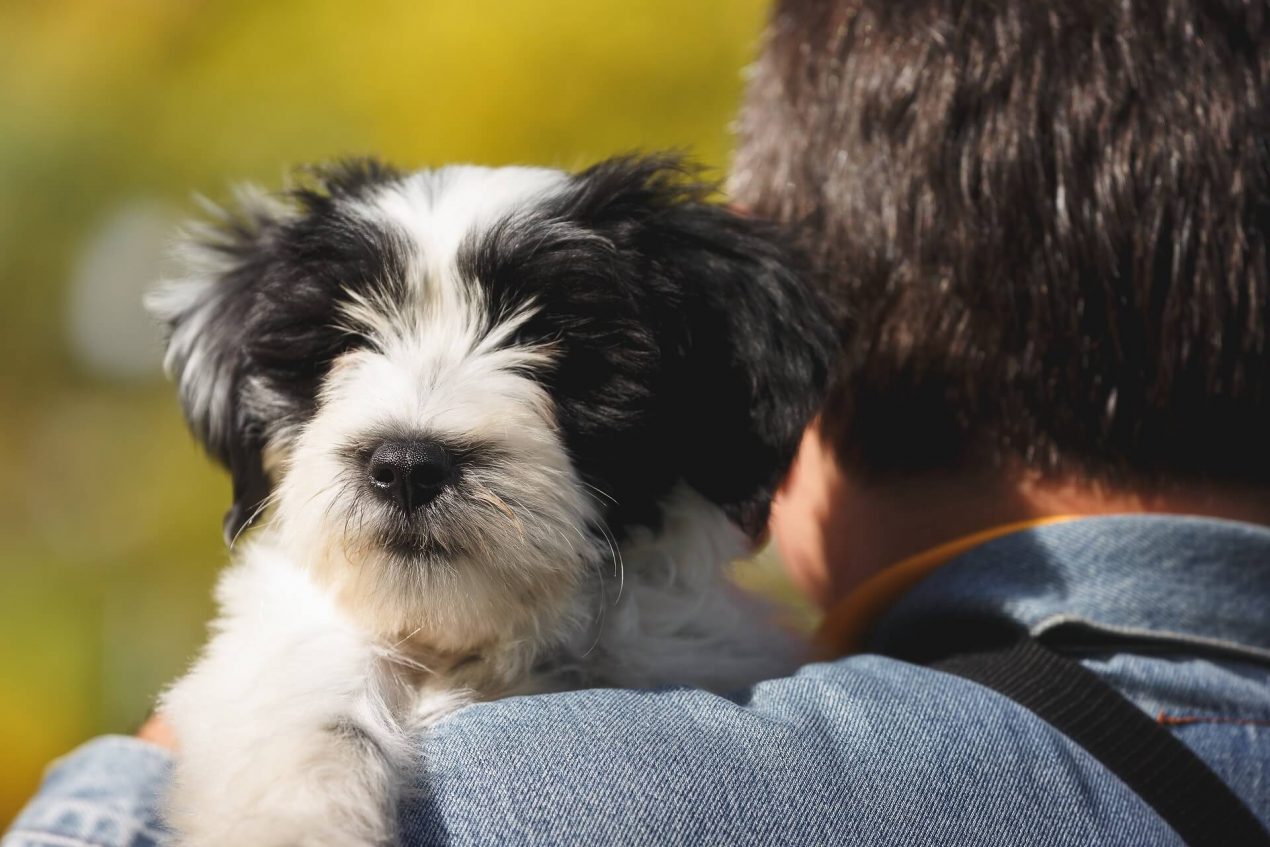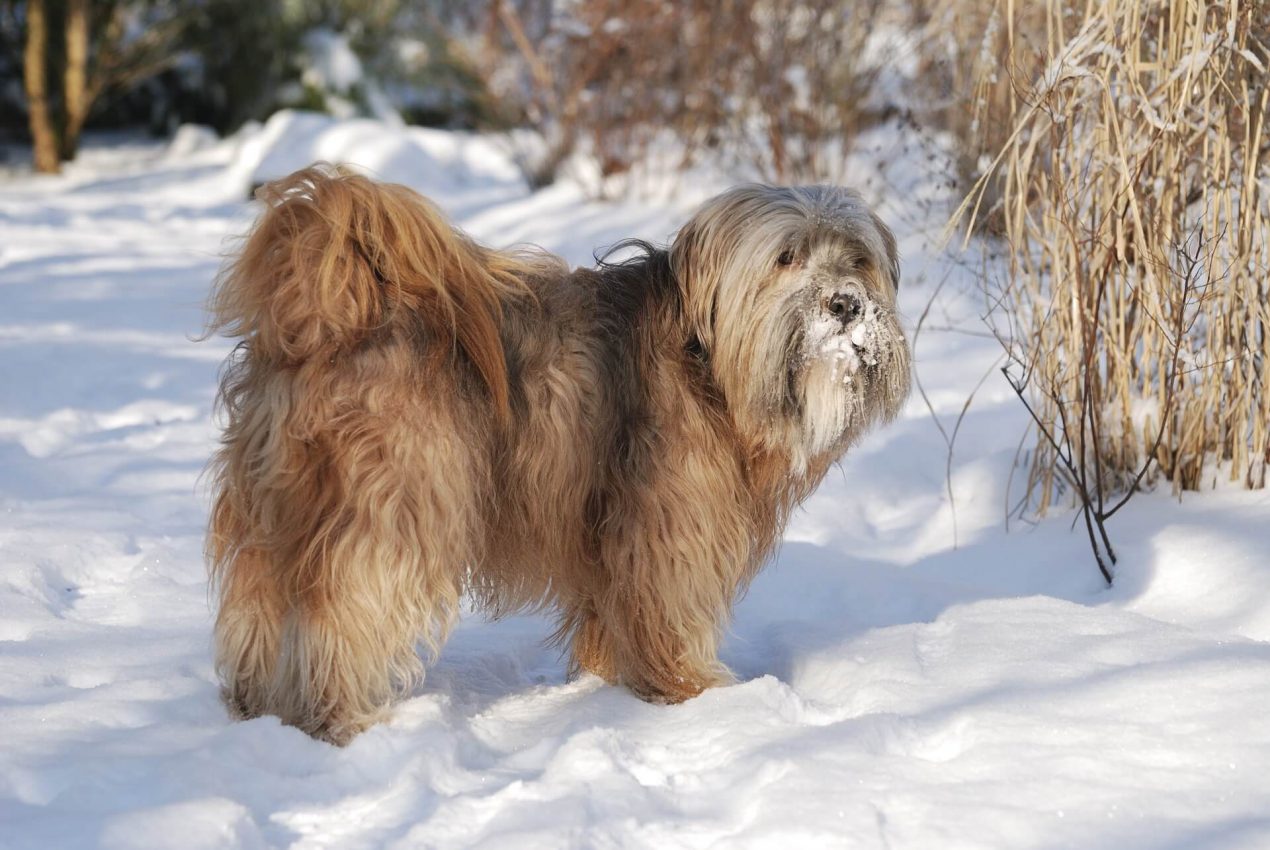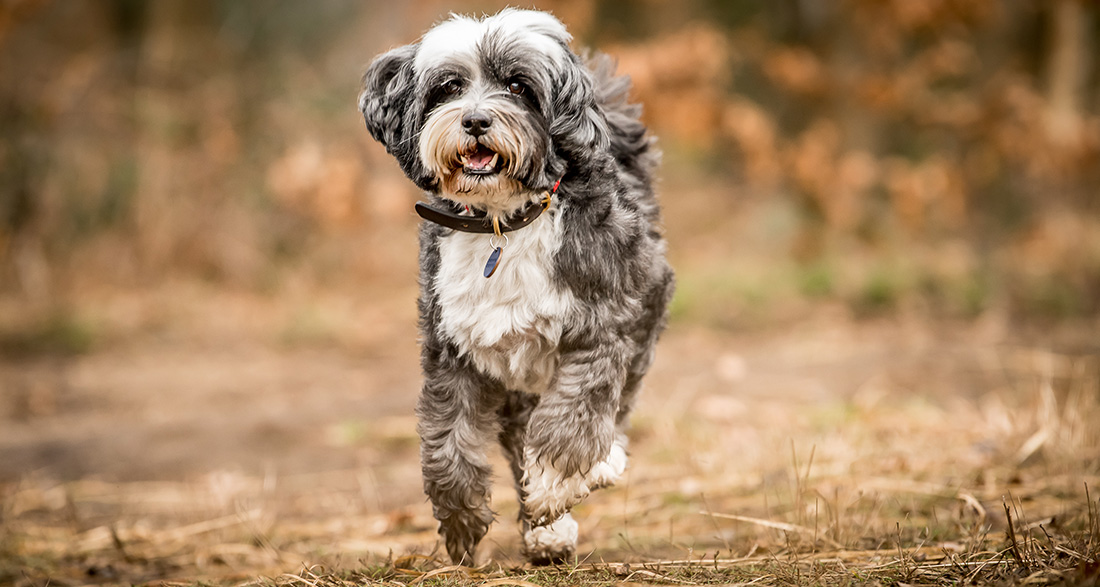The Tibetan Terrier, originally a mountain herding dog, has evolved into a popular family pet. Here’s all you need to know about its history, care, and maintenance.
History of the Tibetan Terrier
As the name suggests, the Tibetan Terrier originates from the Tibetan highlands. According to tradition, monks in a Tibetan monastery kept the first representatives of the breed more than 2,000 years ago. Later, people mostly kept them as herding and guard dogs. The small dog accompanied nomads and their livestock to the mountain pastures at altitudes above 4500 meters during the summer. In settlements, the dogs, referred to by Tibetans as “little people,” usually sat on flat roofs. Their task was to warn residents of approaching strangers.
In 1922, English doctor Dr. Greig received a dog named Bunti as a gift for successfully operating on a noble Tibetan. She brought the golden-white dog to Europe and started her own breeding program. In 1933, the FCI officially recognized the breed under the name Tibetan Terrier. This led to the mistaken belief that the breed was a terrier. Since it is not a terrier by origin, in Tibet it is called Apso. Officially, the FCI classifies the breed in Group 9, which includes all companion and toy dogs. Here, it belongs to Section 5, the subgroup of Tibetan dog breeds.
Breed Overview
GROUP: Non-Sporting
HEIGHT: 14 to 17 inches
WEIGHT: 18 to 30 pounds (most commonly 20 to 24 pounds)
COAT: Soft, woolly undercoat; Dense, long, fine topcoat
COAT COLOR: Solid or any combinations of black, white, gold, brindle, and sable
LIFE SPAN: 12 to 16 years
TEMPERAMENT: Affectionate, even-tempered, playful, loyal
HYPOALLERGENIC: Yes
ORIGIN: Tibet
Personality and Character
The Tibetan Terrier not only looks cute but also has a friendly and cheerful demeanor. It is gentle with other dogs and children and shows no aggression. It is reserved but not unfriendly towards strangers. Despite its small size, the Tibi wants to be respected as a full member of the family and is definitely not a couch potato. The Tibetan Terrier has a strong personality and is very intelligent. They clearly show when they’ve had enough. With pressure, you may even face outright refusal in the worst case. Additionally, the dogs are very vocal and easily encouraged to bark. The bond with their owner is especially important to them.
| Affection Level | High |
| Friendliness | High |
| Kid-Friendly | Medium |
| Pet-Friendly | High |
| Exercise Needs | Medium |
| Playfulness | High |
| Energy Level | Medium |
| Trainability | High |
| Intelligence | High |
| Tendency to Bark | High |
| Amount of Shedding | Low |
Acquiring a Tibetan Terrier
What should I consider when buying one?
If you’re considering getting a Tibi puppy, be sure. After all, the dog will be a part of your family for 12 to 15 years and will always want to be with you. Ideally, you should be able to take it with you as often as possible when you go out. With the right preparation, the friendly Tibetan Terrier is also a good choice for beginners. It’s a great experience to watch the little personality grow and develop a deep bond with it.
Once you’ve decided on a Tibi, find a reputable breeder. It’s best to choose one who is a member of the International Club for Tibetan Dog Breeds and has a lot of experience in breeding. For a purebred and healthy puppy, expect to pay $850 – $1200. Tibetan Terriers come in colors such as white, black, fawn, cream, gray, and smoke, with or without markings. However, you shouldn’t base your choice solely on color. There are also loving Tibetan Terriers in need of a new home in shelters.

Development and Training of the Puppy
If you manage to be consistent and loving at the same time, training a Tibi is not difficult. The breed has its own mind and responds sensitively to punishment. You’ll achieve much more with praise, affection, and clear communication. These small herding dogs are intelligent and enthusiastically learn new commands and tricks.
However, when they’re not in the mood, they like to play dumb and act as if they’ve never heard the command before. With their charming nature, they occasionally try to persuade their humans to comply with their own will. Don’t be confused by this and continue with consistency. The Tibetan Terrier is fully grown at the age of three to four years when it also develops its full coat.
How to Care for a Tibetan Terrier?
Activities with the Tibetan Terrier:
Tibetan Terriers are enthusiastic walkers and particularly suited for mountain hikes. Steep terrain poses no problem for these sure-footed and agile dogs. They enjoy climbing and even leap elegantly in rugged terrain. Tibis especially love frolicking in the snow. They are enthusiastic about any kind of dog sport and are particularly well-suited for agility or dog dancing.
The Tibi enjoys playing and romping with other dogs and is a joyful companion on bike rides. But they’re also eager for clicker training or dummy training. As former herding dogs, they need plenty of activities that challenge both their minds and their athletic bodies. Their special sensitivity to their owners’ feelings also makes them good therapy or visiting dogs.

Health and Grooming
The Tibi’s long coat needs to be brushed daily to prevent matting. Occasionally, you should also trim or tie up the long hair in front of their eyes so the fluffy dog can see well. Dark tear stains can form on light-colored fur, which you can treat with gentle baby oil. If the fur becomes severely matted, a visit to the dog groomer is necessary. But don’t cut too much, as the hair grows back very slowly. The Tibetan Terrier is an original breed without signs of overbreeding. There are almost no hereditary diseases, and their health is mainly dependent on the condition of their coat. Therefore, good coat care is essential.
Interesting Facts
In Tibet itself, the breed “Tibetan Terrier” doesn’t exist. Tibetans call their small, long-haired dogs Apsos (long mustaches). They are the pride of families and are considered bringers of luck and peacemakers. People adore their dogs and protect them from all threats. Even the current Dalai Lama personally had a white Tibetan Terrier named “ssengge.” The little dog accompanied the religious leader to many appointments and never left his side.
One of the most famous Tibetan Terriers in Europe was the male Araki Fabulous Willy from Gloucester. He won the title “Best of Breed” three years in a row and the following year even “Best in Show” at the British dog show Crufts. He was the only representative of his breed to have achieved such recognition.
Do you also have a Tibetan Terrier or are you planning to get one? What makes your Tibi so special? Tell me more in the comments!


